Crimson spot rainbowfish - Melanotaenia duboulayi
Scientific name: Melanotaenia duboulayi
Common name: Crimson spot rainbowfish
Family: Melanotaeniidae
Usual size in fish tanks: 8 - 9 cm (3.15 - 3.54 inch)
014
Recommended pH range: 6.5 - 7.5
Recommended water hardness: 5 - 10°N (89.29 - 178.57ppm)
0°C 32°F30°C 86°F
Recommended temperature range: 22 - 25 °C (71.6 - 77°F)
The way how these fish reproduce: Spawning
Where the species comes from: Oceania
Temperament to its own species: peaceful
Temperament toward other fish species: peaceful
Usual place in the tank: Middle levels
Food and Feeding
The Crimson Spot Rainbowfish (Melanotaenia duboulayi) is an omnivorous species that will readily accept a variety of foods in captivity. Their staple diet should include high-quality flakes or pellets designed for tropical fish, as these provide the essential nutrients needed for their vibrant colors. Additionally, offering live or frozen treats such as bloodworms or brine shrimp once a week will enhance their health and coloration. They may also enjoy small vegetable-based foods, like blanched spinach or spirulina-based flakes, which aid in digestion and provide variety. Crimson Spot Rainbowfish should be fed small amounts twice daily to prevent overeating and maintain water quality. Rotating their diet helps provide variety and prevent boredom, while occasional treats of small insects or larvae, such as daphnia, can help stimulate natural foraging behaviors.
Origin
The Crimson Spot Rainbowfish is native to eastern Australia, particularly in freshwater rivers and streams of New South Wales and Queensland. In the wild, these fish inhabit slow-moving waters that are often densely vegetated, providing natural cover and supporting a healthy population of small invertebrates and algae, essential parts of their diet. They also experience seasonal changes, such as an increase in natural food sources and cooler water during the rainy season. This change can be mimicked in captivity by adjusting the temperature slightly and varying their diet seasonally to help encourage natural behaviors and vibrant coloration.
Sexing
Sexing Crimson Spot Rainbowfish is relatively straightforward. Mature males display red stripes along their bodies, and their dorsal, anal, and caudal fins feature distinct red spots. During breeding displays, males develop a striking black margin on all their fins, adding to their vibrant appearance. Females, by contrast, have clear fins and a more subdued coloration, making them easier to distinguish from males. Additionally, during breeding periods, males may display more active or territorial behavior, making it easier to identify potential mates in a group setting.
Breeding
Breeding Melanotaenia duboulayi is achievable in a home aquarium with the right conditions. A well-planted tank is ideal, as plants provide shelter and suitable spawning sites. Using spawning mops as additional breeding sites can also encourage spawning. Typically, spawning occurs at dawn, when the fish scatter their eggs among plants or mops. To encourage breeding, maintain slightly softer water with a pH closer to neutral, around 6.5-7.0, and increase the temperature to the upper range of their comfort zone, around 25°C (77°F). Regular partial water changes and feeding live or frozen foods can also trigger spawning behavior by simulating conditions in their natural habitat. Once the eggs are laid, it is essential to remove the parents from the tank to prevent them from consuming the eggs. The eggs generally hatch within a week, and the tiny fry can initially be fed infusoria. As they grow, switch to feeding them newly hatched brine shrimp to support healthy development.
Lifespan
With proper care, Melanotaenia duboulayi can live for approximately 3-4 years. Providing stable water conditions, a balanced diet, and a peaceful environment are essential for promoting their health and longevity in captivity. Although the average lifespan is 3-4 years, they may live longer with a well-maintained tank and compatible tank mates. Avoiding overly aggressive species and high-stress environments is crucial for their well-being.
Short Description
The Crimson Spot Rainbowfish, also known as Melanotaenia duboulayi, is a peaceful and sociable species that thrives in groups. They are best kept in schools of six or more, where they can display natural social behaviors and feel secure. However, when kept with other rainbowfish species, crossbreeding is likely to occur, which can result in hybrids. For this reason, many aquarists prefer to keep Crimson Spot Rainbowfish in a species-specific tank. A spacious tank with open swimming areas and some planted sections is ideal. Their peaceful nature makes them suitable for mixed community tanks, but they truly thrive in species-only setups where their unique colors and interactions can shine. Their stunning colors and active schooling behavior make them a popular choice for aquarists looking to add a touch of brilliance to a well-maintained tank.
Pictures
Bought by aqua-fish.net from jjphoto.dk.
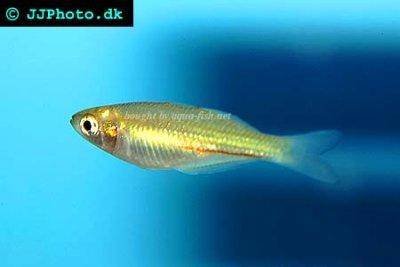


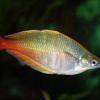 Bleher’s
Bleher’s 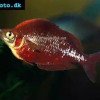 Red
Red 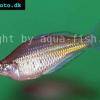 Ramu
Ramu 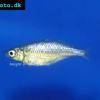 Wanam
Wanam 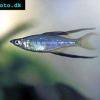 Threadfin
Threadfin 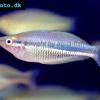 New
New 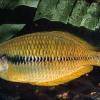 Yakati
Yakati  Boesemani
Boesemani  Australian
Australian 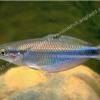 Goldie
Goldie 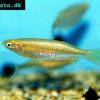 Slender
Slender 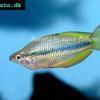 Lake
Lake 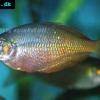 Irian
Irian 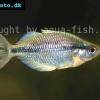 Kamaka
Kamaka 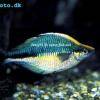 Lake
Lake 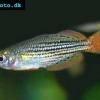 Dwarf
Dwarf 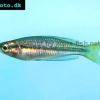 Black
Black 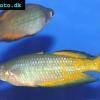 Parkinsoni
Parkinsoni 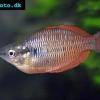 Sunset
Sunset 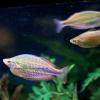 Neon
Neon 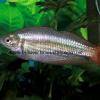 Western
Western 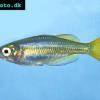 Inornate
Inornate 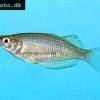 Ruby
Ruby 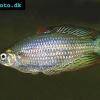 Eastern
Eastern 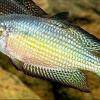 Desert
Desert 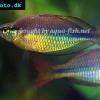 Regal
Regal